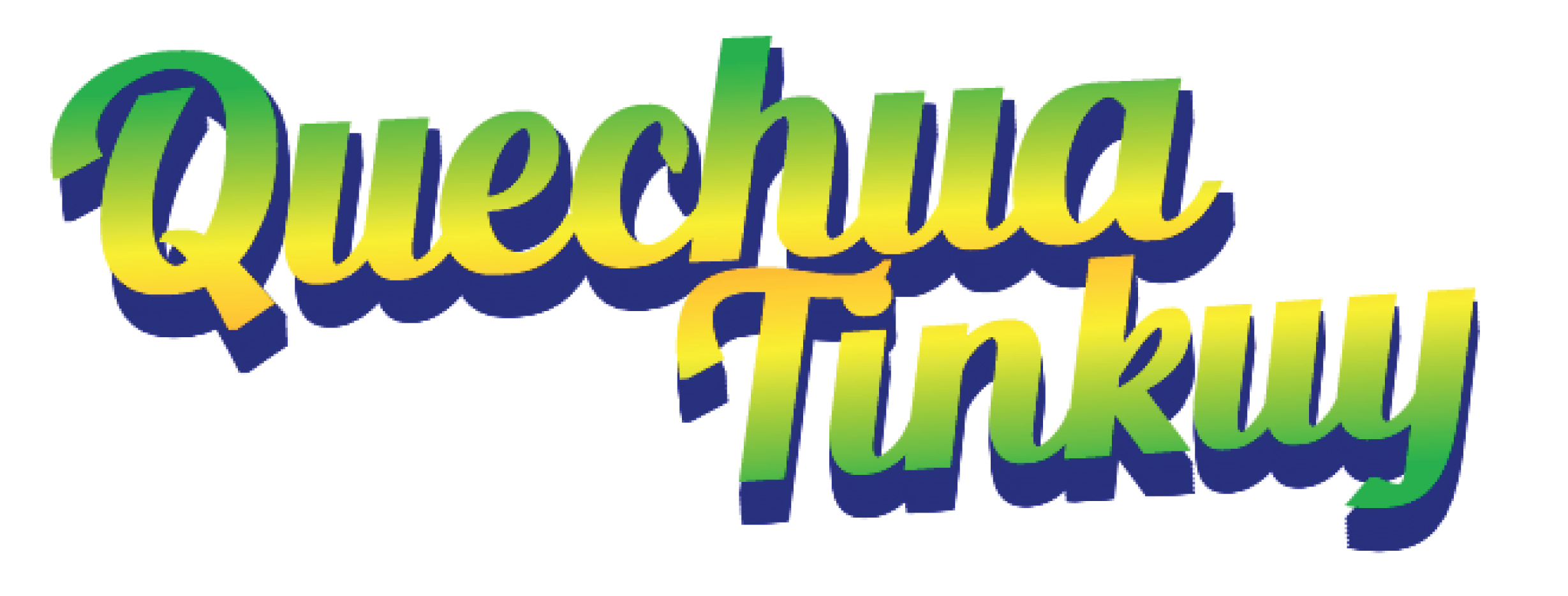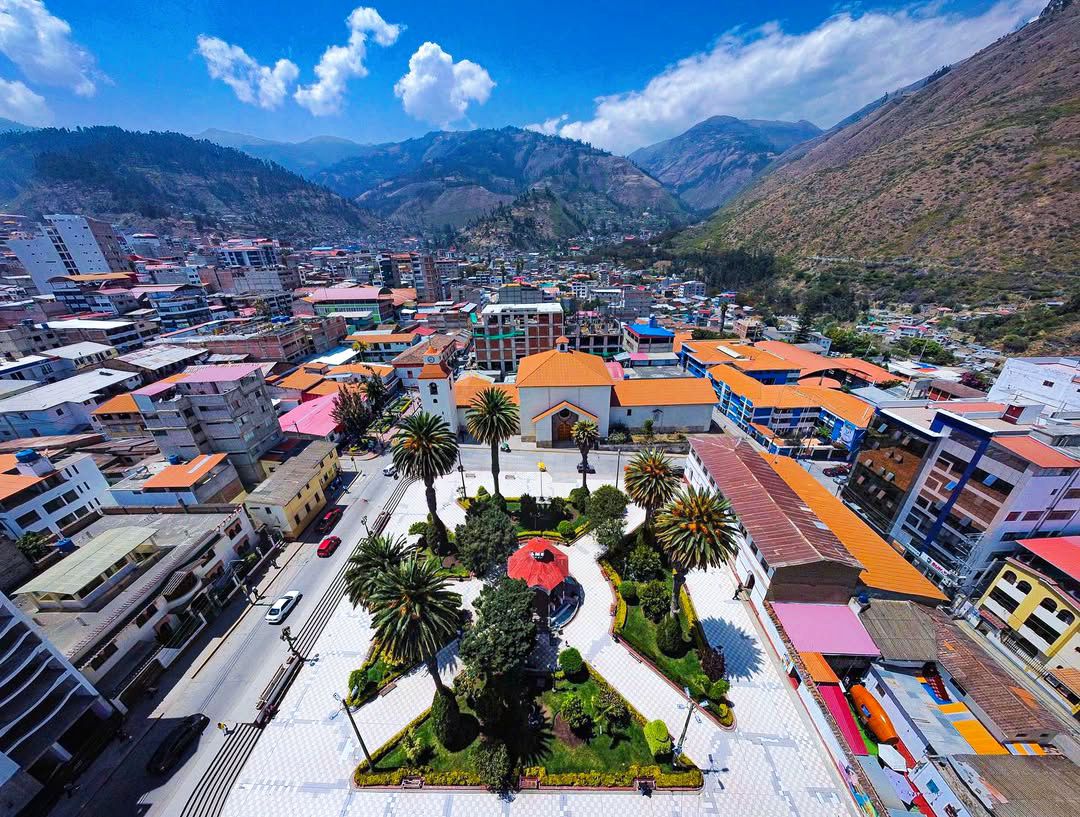
Qallarinapaq | Introduction
In this unit we will learn more about the elaborations of expressions about origin or people's locations. Also, we will learn how to indicate the topic of the conversation, what things are made of, and movements in space and time. Finally, we will learn to express people's location.
We will learn how to use the following suffixes:
To indicate origin, conversation topic, material something is made with, and movements in time and space – manta.
To indicate a person's or object's location –pi.
Ready? Qallarisun! / Let's get started!

Qillqa | Grammar
Grammar 1: -manta
In this unit we will get to know, listen, and see the use of the ablative case, or the relational suffix, or imamanta –manta. This suffix has many uses and also different means and we will see.
The first use of –manta. The most common use of –manta is to express the origin of a person or object. When we add the suffix –manta to the name of a specific place, such as a city, this grammatical case indicates the origin of something. This is the most common way to use –manta in the examples in this unit.
Let's look at the following examples:
| Curahuasimanta Ñuqa Curahuasimanta kani | From Curahuasi I am from Curahuasi |
| Qquehuarmanta Ñuqa Qquehuarmanta kani | From Qquehuar I am from Qquehuar |
| Limamanta Paykuna Limamanta kanku Chay runa Limamanta | From Lima They are from Lima That person is from Lima |
| Ñuqanchik Apurimacmanta kanchis | We are from Apurimac |
| Marta Urubamba llaqtamanta | Marta is from the city of Urubamba |
| Waskarcha Curahuasi llaqtamanta | Waskar is from the town of Curahuasi |
| Chay maqtachakuna Abancaymanta | Those young people are from Abancay |
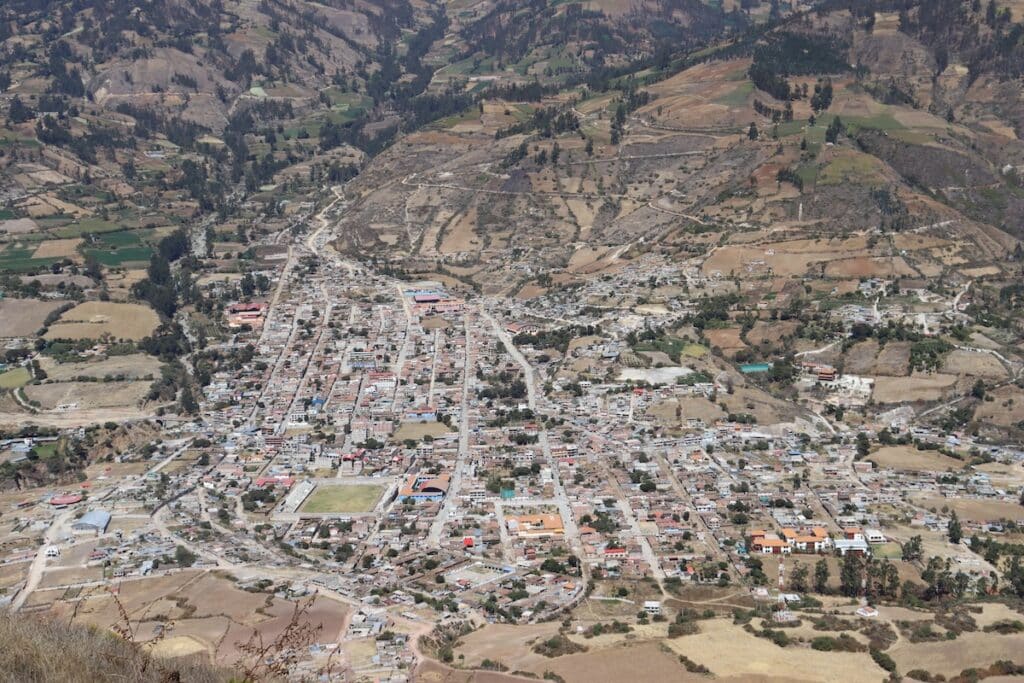
Curahuasi
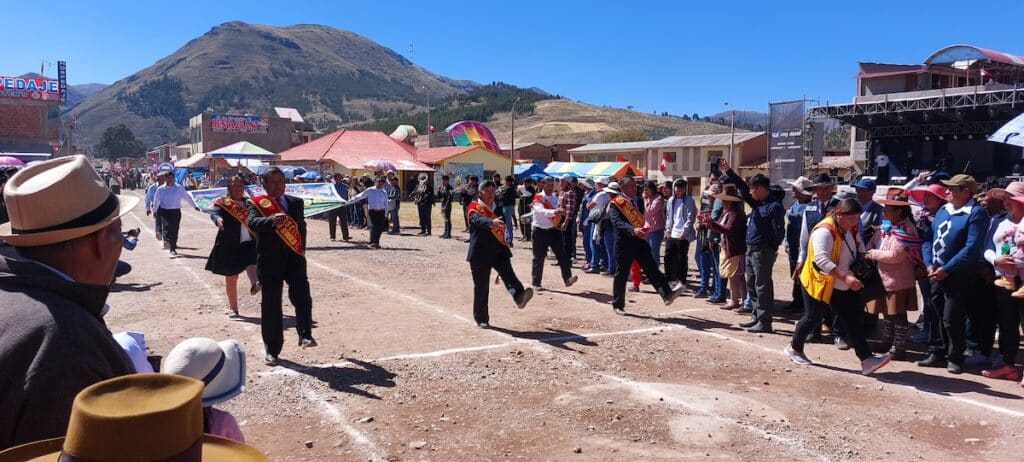
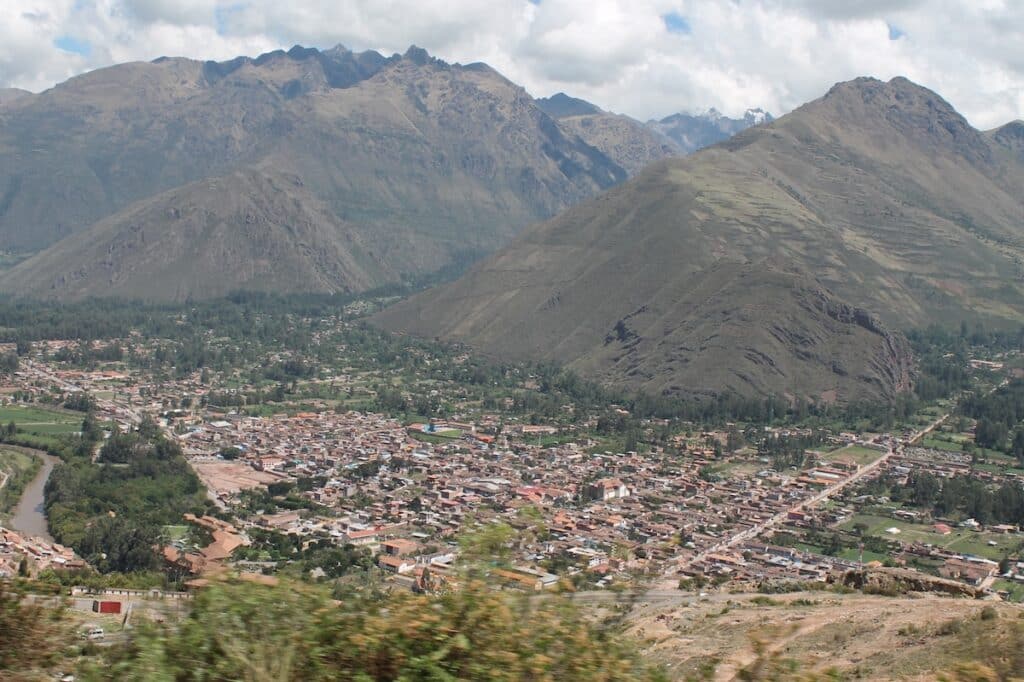
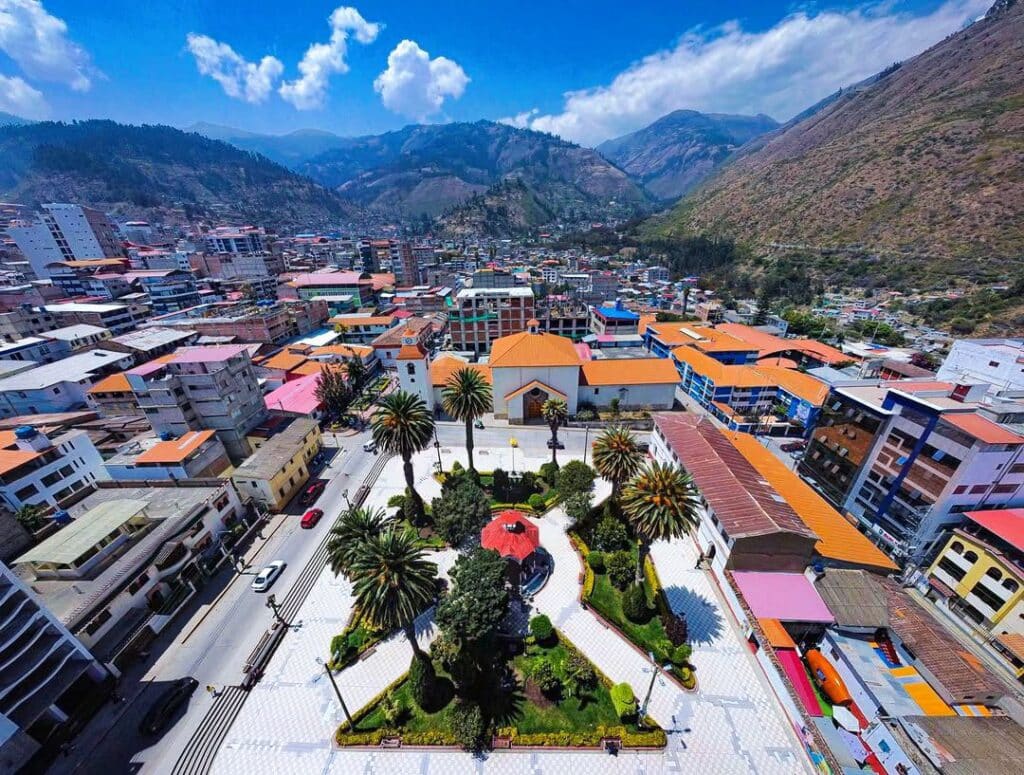
Second use of –manta. The case suffix –manta is used to indicate the topic that is being talked about. For example, when we say Curahuasimantathis also means "of" or "about" Curahuasi. If we add a verb like to speak it will look like this: Curahuasimanta parlachkani, which means, I am talking about Curahuasi.
Let's look at the following examples:
| Kunam Curahuasi llaqtamanta willakusaq | Now I will speak to you about Curahuasi |
| Runasimimanta parlachkan Ramiro | Ramiro is speaking about Quechua. |
| Awaymanta parlachkan mama Santusa | Mama Santusa is talking about weaving |
| Chay warmiqa qarinmanta parlachkan | That woman is talking about her husband |
| ¿Imamantataq chay irqichakunari rimachkanku? | What are those kids talking about? |
| Ñuqa Aymara simimanta rimachkani | I am talking about the Aymara language. |
| Liberato llaqta hatarisqanmanta takichkan | Liberato is singing about the uprising in the town |
| Mamayqa Andarapa llaqtamanta willakuchkan | My mom is talking about the town of Andarapa |
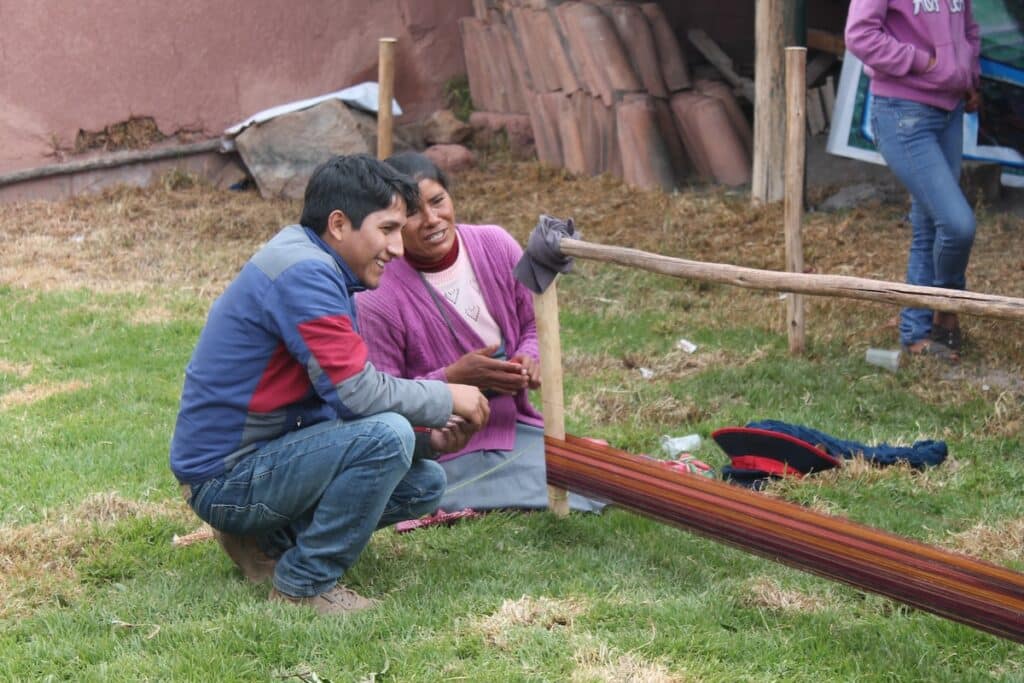
Ramiro is speaking about Quechua.
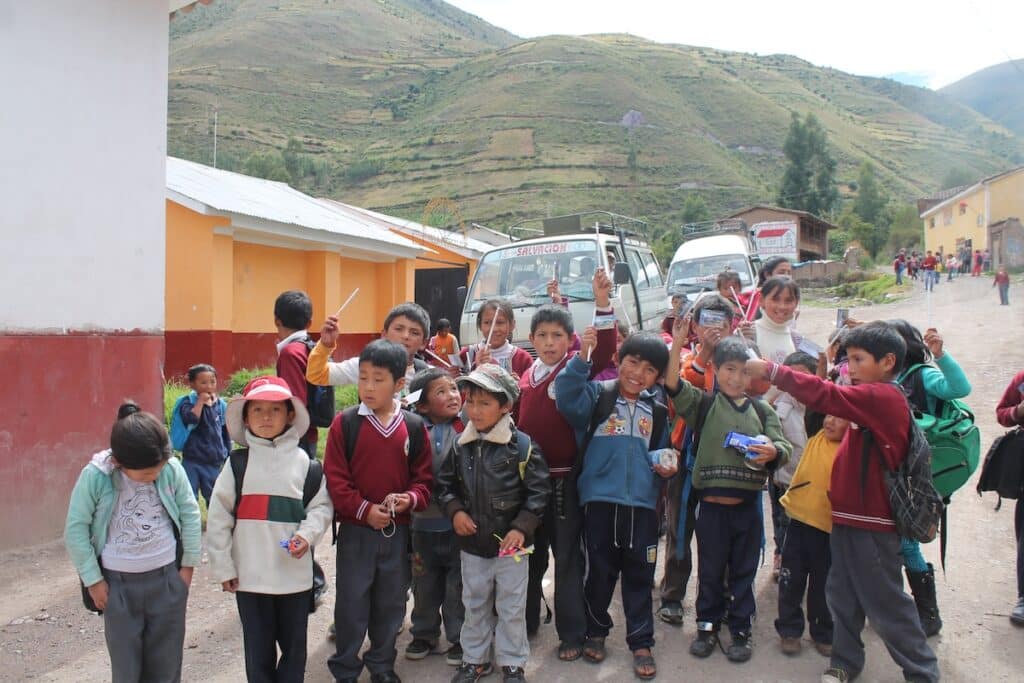
What are those kids talking about?
Third use of –manta. Also the ablative –manta is used to indicate movement in space and time from a specific point of origin.
Let's look at the following examples:
| Qusqumanta kutimuchkani | I am returning from Cusco |
| Llaqtamanta hamuchkanku chay warmikuna | Those women are coming from the town |
| Waynamanta kaypi tiyakuni | I have lived here since I was young |
| Ura mayumanta taytayqa hamuchkan | My father comes from the river below |
| Chakramanta Jorgicha chayarqamun | Jorge has arrived from the chakra |
| Llaqtamanta chayraq mamay kutirqamun | My mom has just returned from the town |
| Irqichamanta futbulta pukllakuni | I have played soccer since I was a kid |
| Raulcha Abancaymanta Qusquman richkan | Raul is going from Abancay to Cusco. |
| ¿Maymantam hamun Curahuasi suti? | Where does the name Curahuasi come from? |
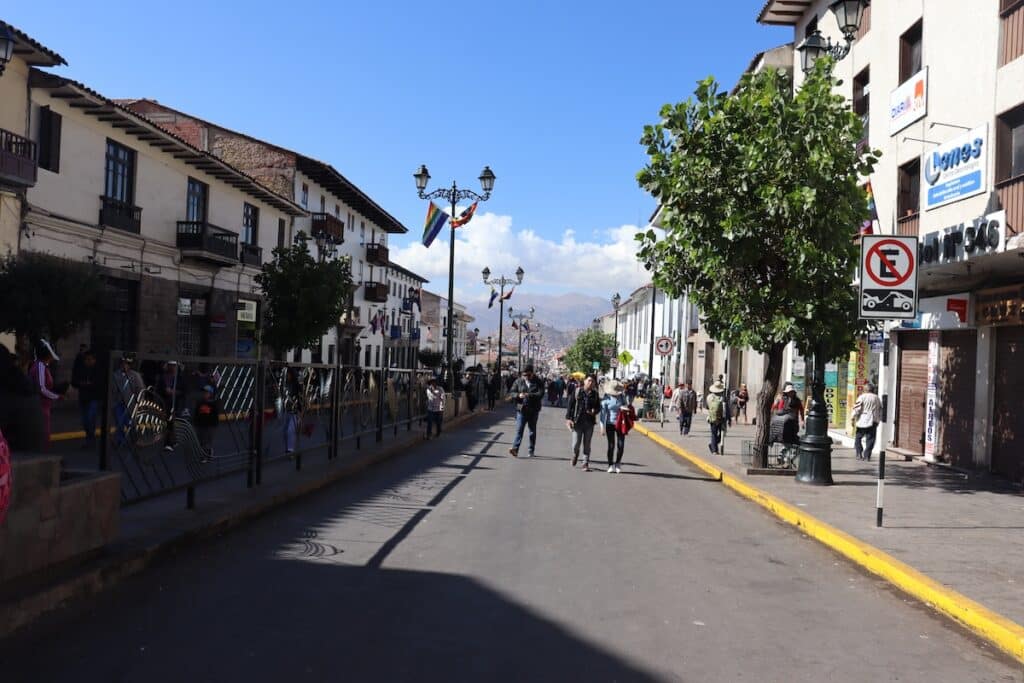
I am returning from Cusco
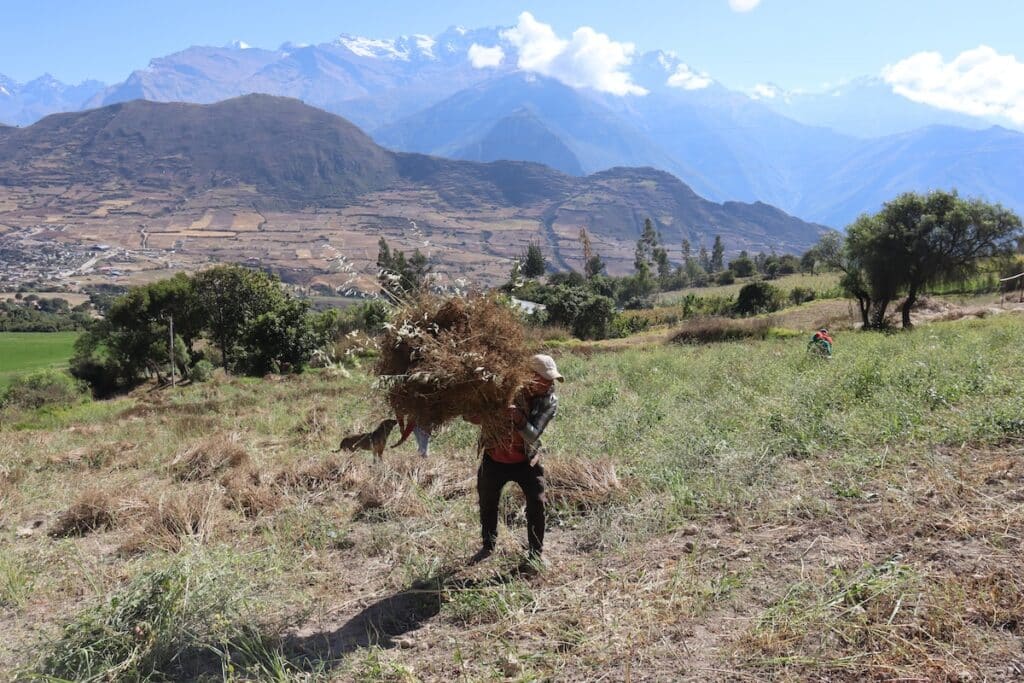
Jorge has arrived from the chakra
Grammar 2: -pi
In this unit we will get to know, listen, and see the use of the locative case or tarichiq –piThis is a nominal suffix that functions as an adverb of time and space. A noun uses this case when it represents a final location (place) or moment (time) of the verb. The use of the locative –pi responds to the following questions: ¿Maypitaq? Where? ¿hayk’aptaq? When?
The first use of –pi. The most common use to refer to a determined location. For example, Limapi, in Lima, or Ayacuchopi, in Ayacucho.
Let's look at the following examples:
| Ñuqa Curahuasipi llamk’ani. | I work in Curahuasi |
| Irene Limapi runasimita yachachichkan | Irene is teaching Quechua in Lima |
| Wasiypi wayk’usunchis | We will cook in my house |
| Curahuasipi tukuy imata chakrapi llamk’anku | In Curahuasi they produce everything in the Chakra |
| Abancaypi achka runa tiyan | Many people live in Abancay |
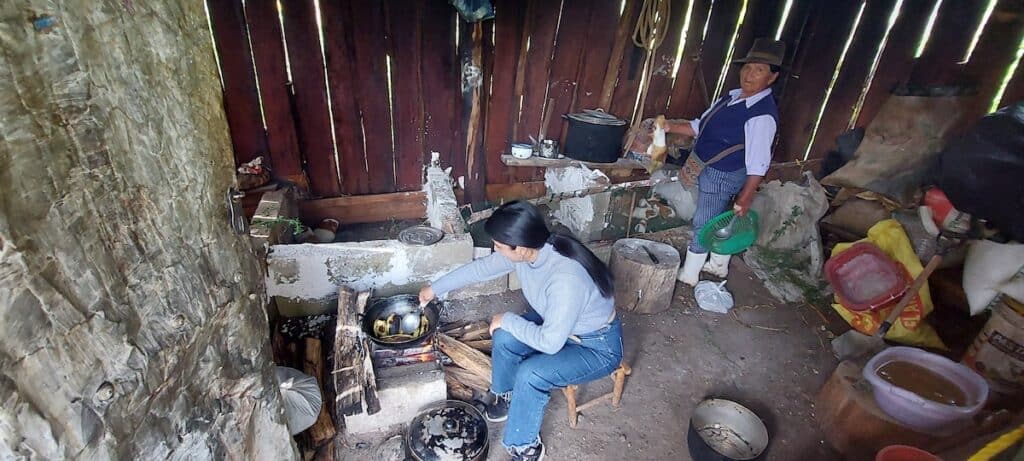
We will cook in my house
Second use of –pi. This nominal suffix also functions as a temporal adverb. A noun uses this case when it represents the moment (time) of the verb. In this case the use of the locative –pi responds to the questions ¿Hayk’aptaq? When? For example, when I say fiestapi, I refer to the time of the party.
Let's look at the following examples:
| Hatun Puquy killapi chayamusaq | I will arrive in the month of February |
| Pukllay p’unchawkunapi tususunchis | In the days of carnival we will dance |
| Cruz Velakuypi munayta huñunakuyku | In the Festival of the Cross we will meet |
| Sara tarpuypi tupasunchis | We will meet at the corn sowing |
| Fiestapi China María takichkan | China María is singing at the party |
| Hamuq watapi futbolta pukllasaq llaqtaypi | Next year I will play soccer in my town |
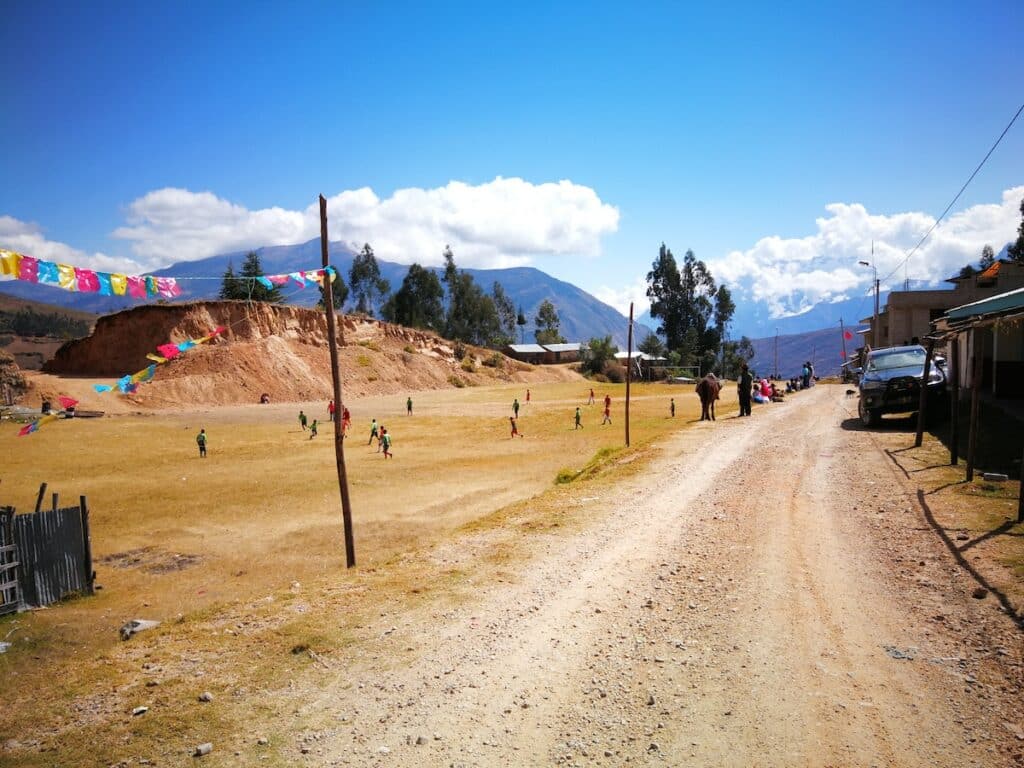
Next year I will play soccer in my town
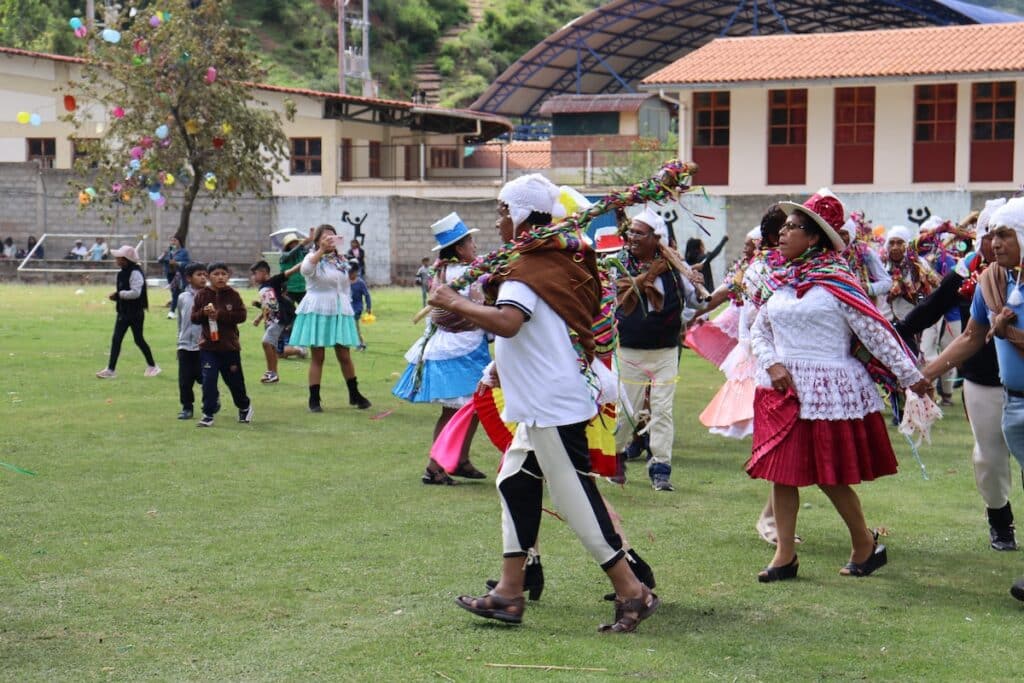
In the days of carnival we will dance

Rimanakuna | Vocabulary
| Runa | Person |
| Maqt’a | Young person |
| Llaqta | town, community |
| Runasimi | Quechua |
| Willakuy | News |
| Parlay | To speak |
| Irqi | boy, girl |
| Simi | Language |
| Takiy | to sing |
| Rimay | To speak |
| Kutimuy | to return |
| Hamuy | to come |
| Tiyay | to live, reside |
| Chakra | Chakra, field |
| Mayu | river |
| Riy | to go |
| Waynu | Huayno music |
| Tusuy | to dance |
| Llamk’ay | to work |
| Yachachiy | To teach |
| Wayk’uy | to cook |
| P’unchaw | Day |
| Huñunakuy | to meet |
| Pukllay | To play |
| Yanapay | to help |
| Allay | To dig |
| Michiy | to herd |

Ruwapakuy | Exercises
The first use of –manta
Using the suffix –manta for the origin of a person or object, tell us where your family and friends are from in five sentences. You can look at these examples to write your sentence:
| Wawqiy Mario Andahuaylasmanta | My friend Mario is from Andahuaylas |
| Runasimi yachakuqkuna Lima llaqtamanta | The Quechua students are from Lima |
| Mamay Santosa Andarapamanta | My mom, Santosa, is from Andarapa |
| Taytay Angel Curahuasimanta | My dad, Angel, is from Curahuasi |
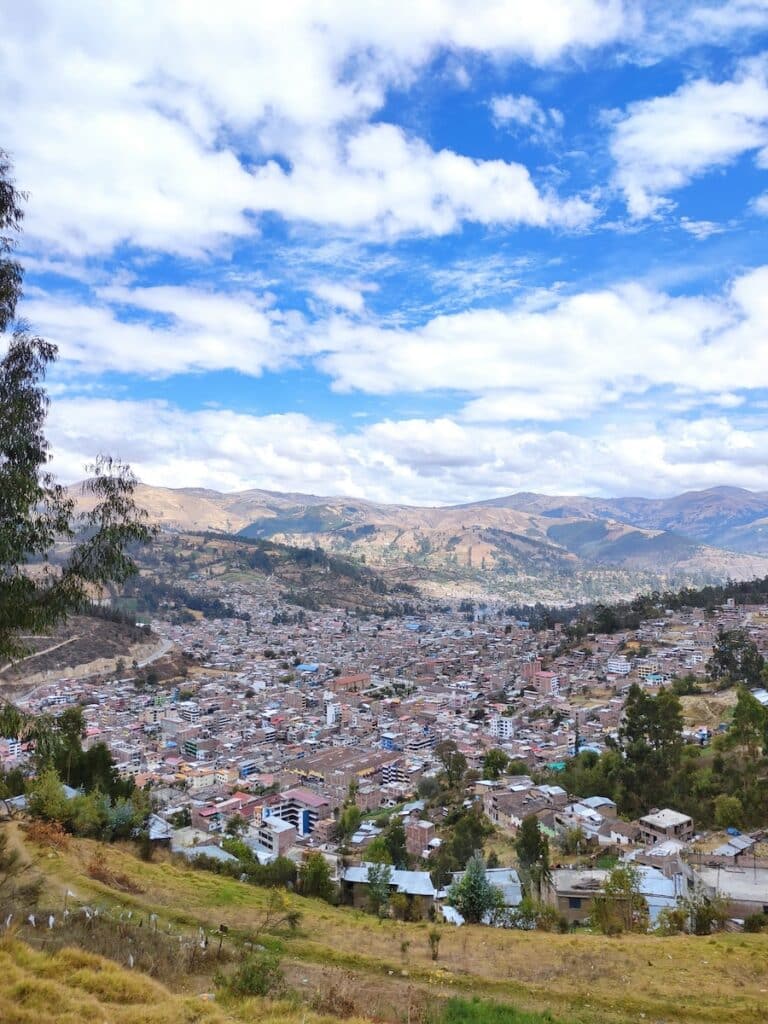
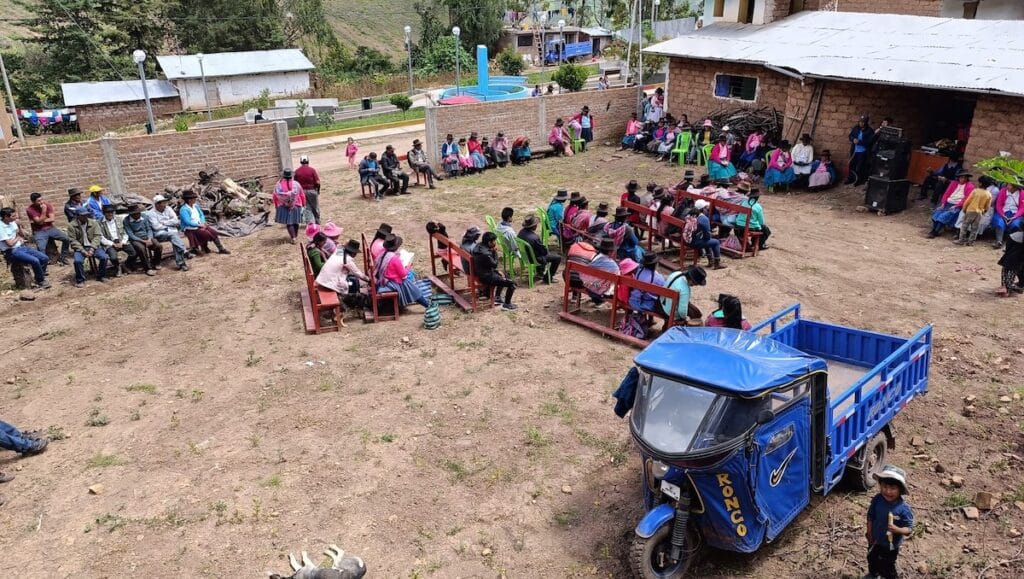
Second use of –manta
In five sentences describe the different topics that you converse about with your friends.
Look at this example:
| Ayllunmanta takichkani | I am singing about my community |
| Llaqtaynmanta willakuchkani | I am talking about my community |
| Allquymanta rimachkani | I am talking about my dog |
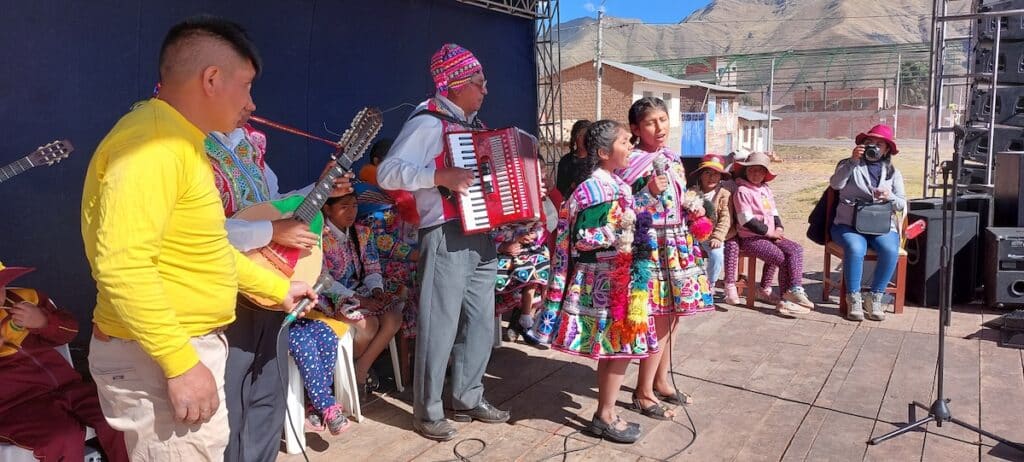
I am singing about my community
Third use of –manta
Now write five examples of the use of this suffix to indicate movement in space or time.
You can follow the model of these examples:
| Hatun huñunakuymanta Taytay chayamuchkan | My father is arriving from the big assembly |
| Sipasmanta Lauraqa waynuta tusun | Laura has been dancing waynu since she was young |
| Maria Limamanta kutimuchkan | Maria is returning from Lima |
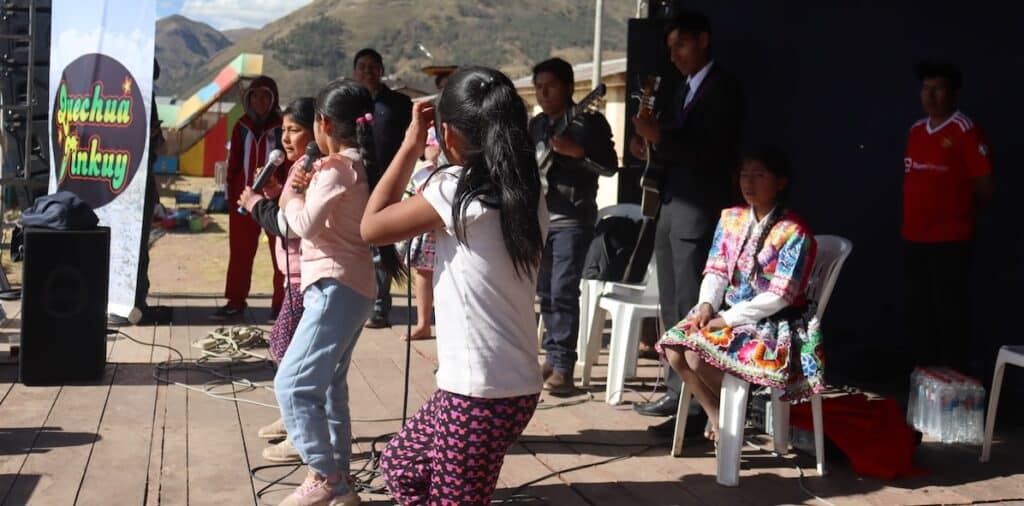
Laura has been dancing waynu since she was young
The first use of –pi
Now write five examples of the use of this suffix to indicate the location of an action. You can follow these examples:
| Abancaypi llamk’ani | I work in Abancay |
| Limapi wawqiy tiyachkan | My brother lives in Lima |
| Qquehuarpi runakuna tusuchkanku | The people in Qquehuar are dancing |
Second use of –pi
Now write five examples of the use of this suffix to indicate the time of an action. You can follow these examples:
| Carnavalpi tupasunchis | We will meet each other at the carnival |
| Papa allaypi yanapasqayki | I will help you dig the potatoes |
| Hamuq killapi wakata michisunchis | Next month we will graze the cattle |
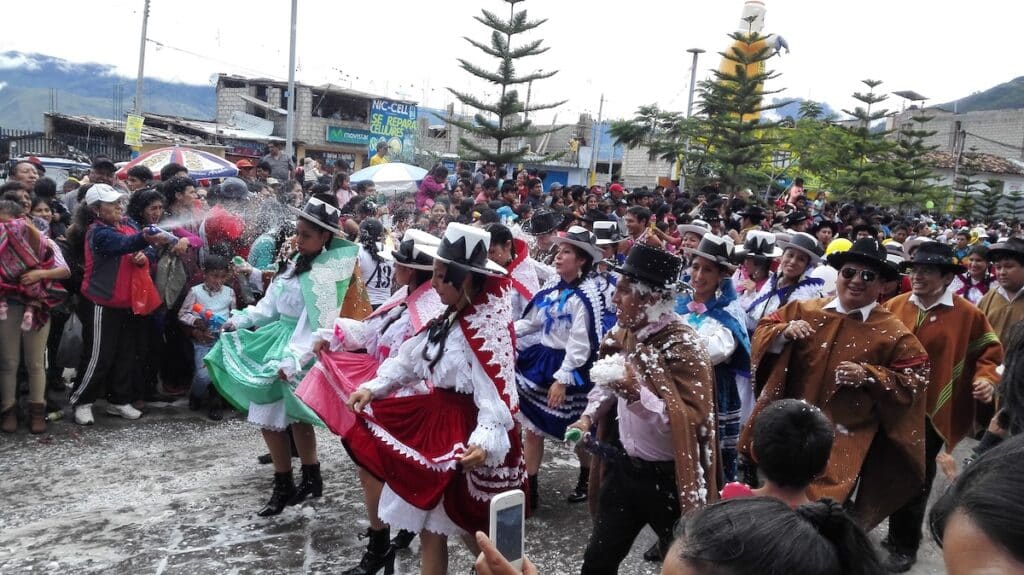
We will meet each other at the carnival

Qawasunchik | Videos
Now watch these two videos about Curahuasi and Qquehuar. In these videos identify the use of the suffixes that we have learned in this unit.
Show Video Transcript: Curahuasimanta
Ñuqa kani Curahuasimanta, Curahuasipi tiyani.
Kunan Curahuasi llaqtamanta willakusaq.
¿Maymantam hamun Curahuasi suti? Ñawpa machupayakunam aqnata willakunku.
Curahuasi sutiqa kay tupasqa sutikunamantas hamunman:
1. Kuraq churiq wasinmanta, ¿ima ninmi kay?, kuraq runaq wasinmanta, kuraq churiq wasinsi kanman karqan.
2. Qura wasimanta: ¿Ima ninmi kay? Maypi llaqta kasqansi unaymantapacha qura sapallaña kasqa, kunankamapas kaqllan, Curahuasipiqa watantinmi chakrakunaqa q’umir q’umir kashanku. Curahuasi runakunam tukuy imata llamk’anku.
3. Curaq wasinmanta: ¿Ima nintaq kayri?, ñawpa watakunapis huk cura padrecito tiyasqa kay llaqtapiqa, chaysi ninkuman curaq wasin nispa. Kunankamapas manayá yachakunchu may suti tupasqanmantachá paqarimurqa.
Curahuasiqa Abancay provinciapim tarikun, Abancaytaq Apurimac regionpi.Curahuasiqa hatu hatun urqukunaq chawpinpim kachkan, Apurimac mayupas llaqtaq urallantan richkan. Achka runam tiyayku llaqtapiqa, yaqachus iskay chunka waranqamanpas chayachkayku. Curahuasipiqa yaqa tawa chunka pisqayuq ayllukunam kanku. Aylluyñataq Puca Puca.
Yaqa lliw Curahuasi runakunaqa catolikum kanku. Kikin plasachanpim hatun igleasiapas kachkan. Munayllañam Curahuasiqa, manam nishutapaschu ruphan nitaq nishutapaschu chirinpas. Chaymi watantin chakratapas llamk’anku llaqtapi tiyaqkunaqa. Noviembre killamanta pachan paraqa qallarin Curahuasipiqa yaqa abril killakama. Mayo killamanta octubre killakamataq para ayqipun hinaspa llaqtaqa ch’akillaña. Curahuasipin tukuy imata chakrapi llamk’ayku, anista, sarata, papata, tarwita, fresasta, paltayta, lisasta, uqata, triguta, linasata, frejolkunata ima.
Show Video Transcript: Qquehuarmanta
Imaynallan. Ñuqa kani Qquehuarmanta, Qquehuarpi tiyani. Kunan p’unchaw Qquehuarmanta rimaykusaq.
Qquehuar llaqtaqa comunidadmi hinallataq centro poblado. Canchis provincia ukupim tarikun hinallataq Qusqu regiunpi. Qusqu llaqtamantaqa iskay horapin chayakun Qquehuar llaqtakamaqa.
Qquehuar llaqtaqa urqukunaq chawpinpim hinallataq Apukunaq chawpinpi. Qquehuar llaqtapin kanku pichqa barriukuna. Chay barriokuna sutinmi Warmillaqta, Cruzcunca, Cercopata, Hanccoccala, chaymanta Ccochacunca ima. Qquehuar chawpintam purin Ccanccahua mayu. Qquehuarpim tiyanku yaqa pichqa waranqa runamasikuna. Qquehuar llaqtaq qayllaninpi kanku huk llaqtakuna, kachkankum Pampa Anza, Livincaya, Ccanccahua, Lari, Puchuri, Pampa Ccalasaya, chaymanta Chiwaco ayllu ima.
